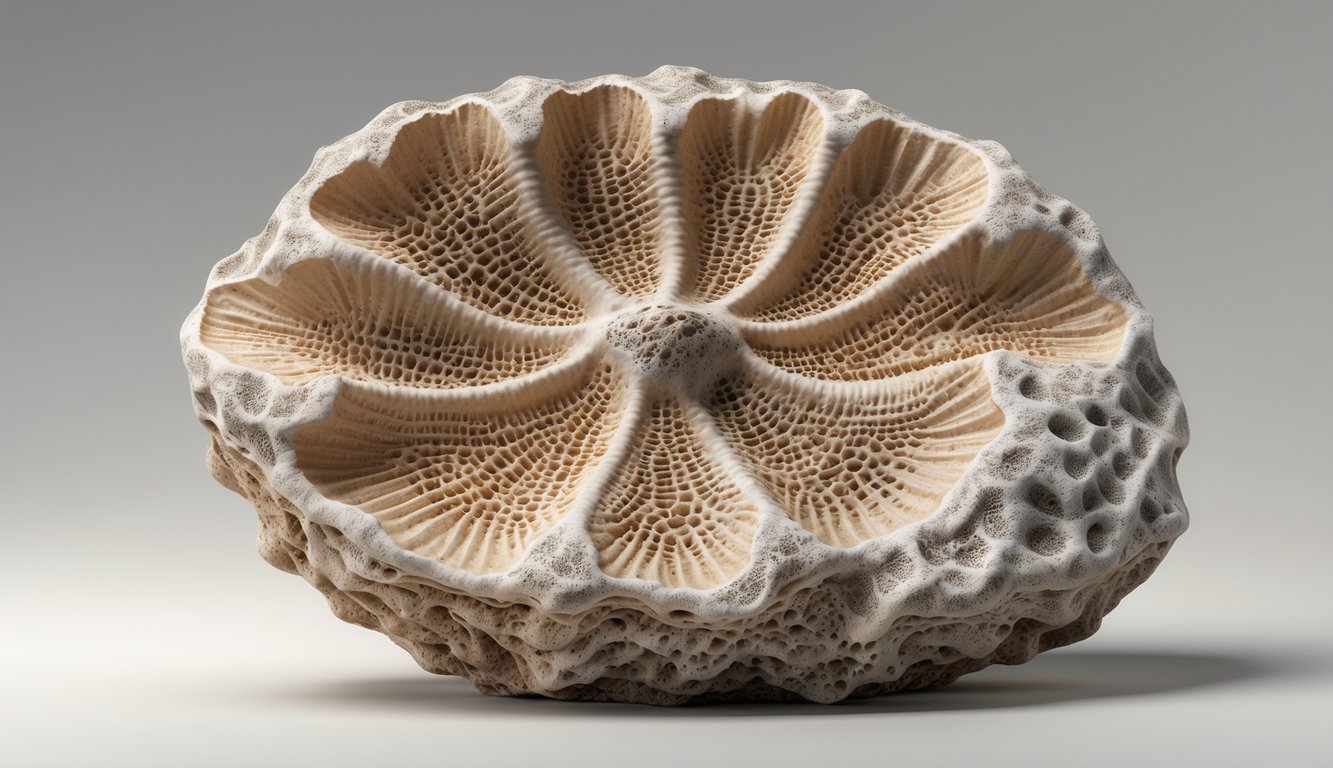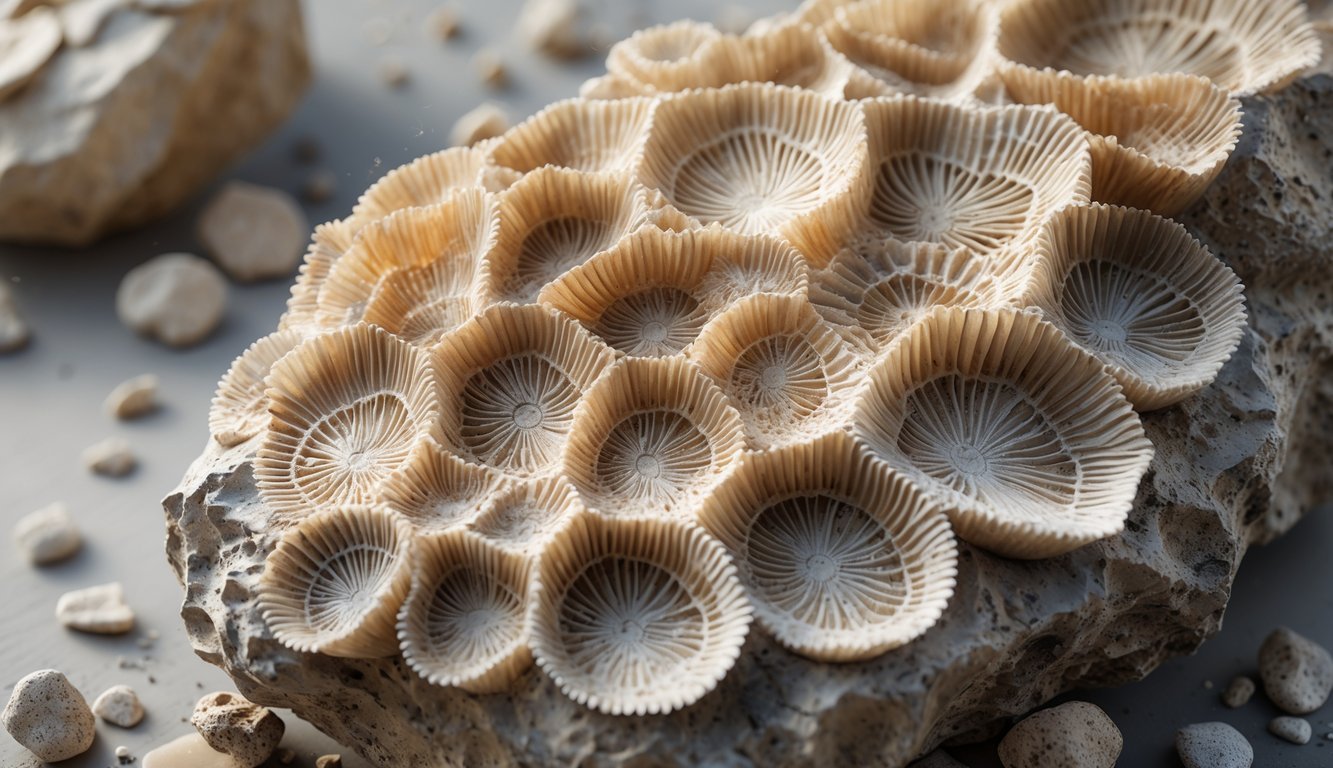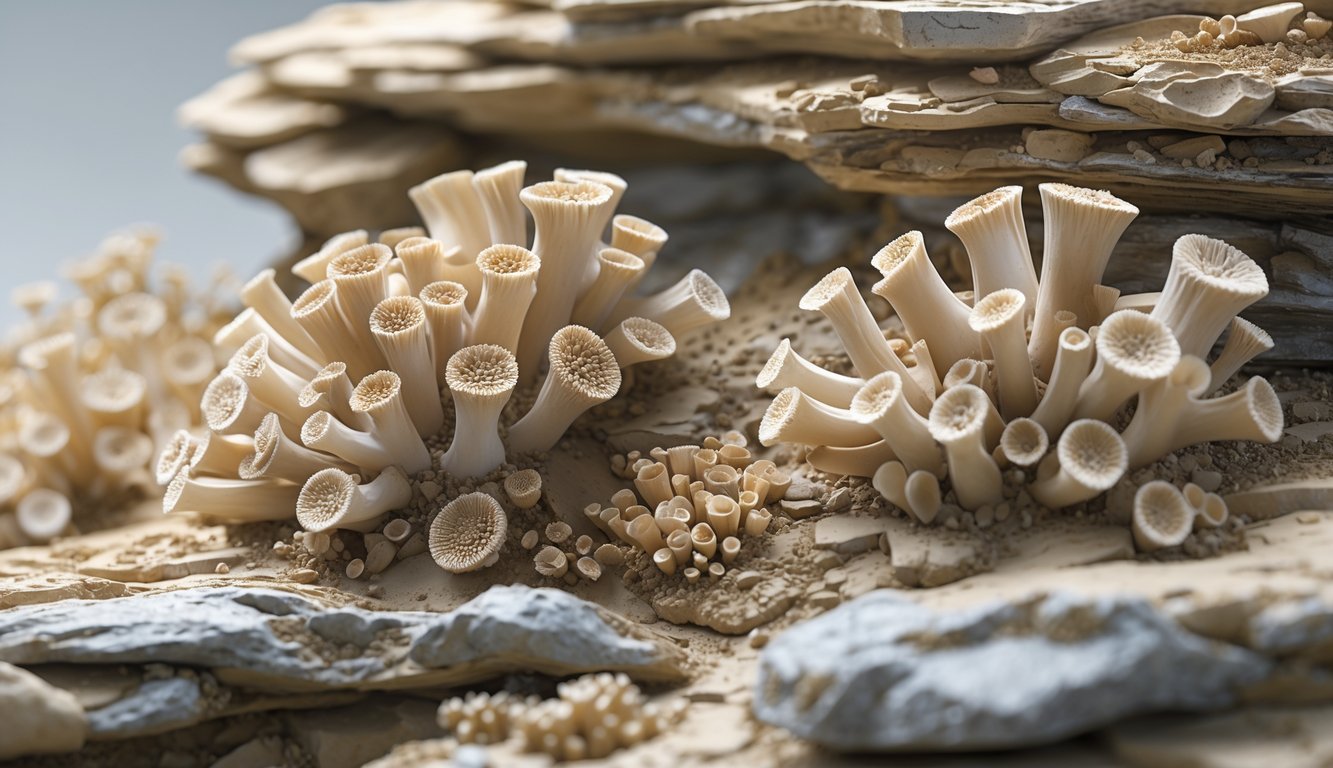PsychNewsDaily Publishers
100 Summit Drive
Burlington, MA, 01803
Telephone: (320) 349-2484
PsychNewsDaily Publishers
100 Summit Drive
Burlington, MA, 01803
Telephone: (320) 349-2484
Fossil coral forms from ancient coral skeletons transforming into stone through mineral replacement, preserving unique patterns and providing insights into Earth's prehistoric environments and ecosystems.

Fossil coral is honestly one of nature’s coolest gemstones. It forms when ancient coral skeletons, over millions of years, slowly transform into stone. Minerals like agate replace the original coral, and somehow, those unique patterns stick around, frozen in time. This whole process turns soft coral into something hard and beautiful you can actually hold in your hand.
So, why does fossil coral matter? Its wild patterns make it a favorite for jewelry and décor, but it’s also a scientific goldmine. Researchers dig into fossil coral to uncover clues about Earth’s ancient environments. It’s like a direct link to seas from hundreds of millions of years ago.
If you love fossils, gemstones, or just the oddities of nature, fossil coral has a story that’s all about history, beauty, and a little bit of science—packed into one stone.

Fossil coral comes from the remains of coral animals that lived millions of years ago. These fossils show off the hard skeletons corals left behind, letting you see their shapes and the worlds they lived in.
You can spot different coral types, learn how they formed, and even figure out which ancient era they belong to.
Corals start out as little animals called polyps. They build hard skeletons from calcium carbonate, either living alone or in groups. When corals die, their skeletons get buried in sediment.
After burial, minerals like silica or calcite slowly replace the original skeleton. This keeps the coral’s shape but turns it into stone. The process can take thousands—or even millions—of years.
Sometimes, silica creates agatized coral. In other cases, aragonite changes into calcite. Fossilization can preserve tiny details, like the corallites that once held living polyps.
Fossil corals come in a few groups. Rugose corals (horn corals) lived mostly alone and were big during the Paleozoic era. Tabulate corals formed colonies with lots of polyps, making flat or rounded shapes.
Today’s corals mostly belong to Scleractinia. These build colonies too, with skeletons full of corallites. Fossil corals can be solitary (just one polyp) or colonial (lots of polyps together).
If you look at the patterns in fossils, the size and shape of corallites can reveal the coral’s family and how it lived. It’s a window into how these animals adapted to ancient oceans.
Fossil corals show up in rocks from many geologic periods. Some of the oldest are from the Ordovician—over 450 million years ago. Rugose and tabulate corals really thrived in the Paleozoic, especially the Devonian.
Modern-looking corals (Scleractinia) appeared later, in the Triassic period, about 250 million years ago. These corals are still around, but their fossils show how they’ve changed.
By checking out fossil coral from these times, you get a peek at ancient seas, climates, and ecosystems. Colonial and solitary coral fossils each tell their own story about life in prehistoric oceans.

Fossil coral is like a time capsule from ancient seas, with shapes and minerals that reveal so much about past worlds. Its structure holds clues about old climates, sea conditions, and even the creatures that lived back then.
When you understand its makeup and where it’s found, you can see why this gemstone matters for both collectors and scientists.
Fossil coral starts out as a living skeleton, mostly made of calcium carbonate. Usually, this comes in the crystal form called aragonite. After the coral dies and gets buried, minerals like calcite slowly take over, replacing the original aragonite.
This mineral swap keeps all the tiny details but changes the coral’s chemistry. Sometimes, manganese and iron sneak in, changing the fossil’s color or making it heavier.
The mix of minerals can actually tell scientists about water temperature and chemistry when the coral was alive. Fossil coral’s tough mineral base means it can last millions of years, buried deep in limestone or ancient sediment, waiting to be discovered.
You can spot fossil coral by its wild patterns and shapes. Its skeleton, called a corallum, shows off growth structures from ages ago. Look for calices—those little cups where polyps lived—arranged in circles or stars.
Thin walls called septa radiate out like spokes on a wheel. Other features, like tabulae (horizontal plates) and the columella (the central bit), help you figure out the coral’s species, like Favosites or Acropora.
Branching or massive round forms can hint at the coral’s original reef home. Color varies too, thanks to minerals—gray, brown, red, or even green. These patterns and colors make fossil coral easy for jewelers and paleontologists to spot.
You’ll find fossil coral all over the world, mostly in places that used to be shallow coral reefs. In the U.S., the Florida Keys are famous for both modern and ancient reefs. The Falls of the Ohio along the Ohio River has huge, well-preserved fossil coral beds.
Kentucky is packed with Carboniferous coral fossils. Parts of California and Michigan also have fossil coral from times when those places were near the equator.
These fossil sites help scientists track changes in sea surface temperature, past climate shifts like the Ice Age, and mass extinction events that rocked ancient oceans. Fossil coral from these spots bridges the gap between biology, geology, and climate science.

Fossil coral comes in all kinds—different types, ages, and values. Some pieces have crisp patterns, while others get changed through agatization. You can find fossil coral for sale if you know where to look. Plenty of people also connect fossil coral to healing or spiritual vibes.
Check the shape and pattern. Rugose corals look horn-like, Tabulata corals have plate-like structures, and Scleractinia are more modern with hard skeletons.
Where you find the coral can also give you a clue about its type.
Value comes down to rarity, size, and condition. Agatized coral, replaced by quartz, usually fetches higher prices. More common fossil corals cost less, but collectors still love them.
You can buy fossil coral at rock shops, online, or at fossil fairs. It’s smart to check the seller’s reputation so you know you’re getting the real deal.
People say fossil coral brings peace, protection, and energy balance. Some think it helps with grounding or connecting to nature, though there’s really no hard science behind these beliefs.
Usually, scientists date the rock layers where the coral was found. Fossil corals can be millions of years old, from periods like the Paleozoic or Mesozoic.
Agatization starts when minerals such as quartz move in and take the place of the coral’s original material.
The coral keeps its intricate structure, but its composition changes. Over time, it transforms into a tougher, sometimes more colorful stone.